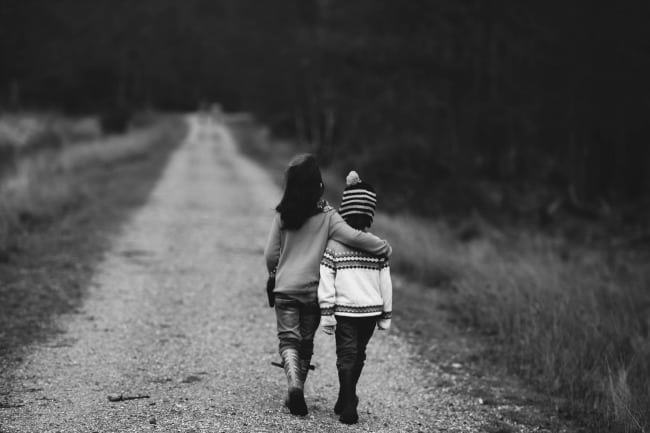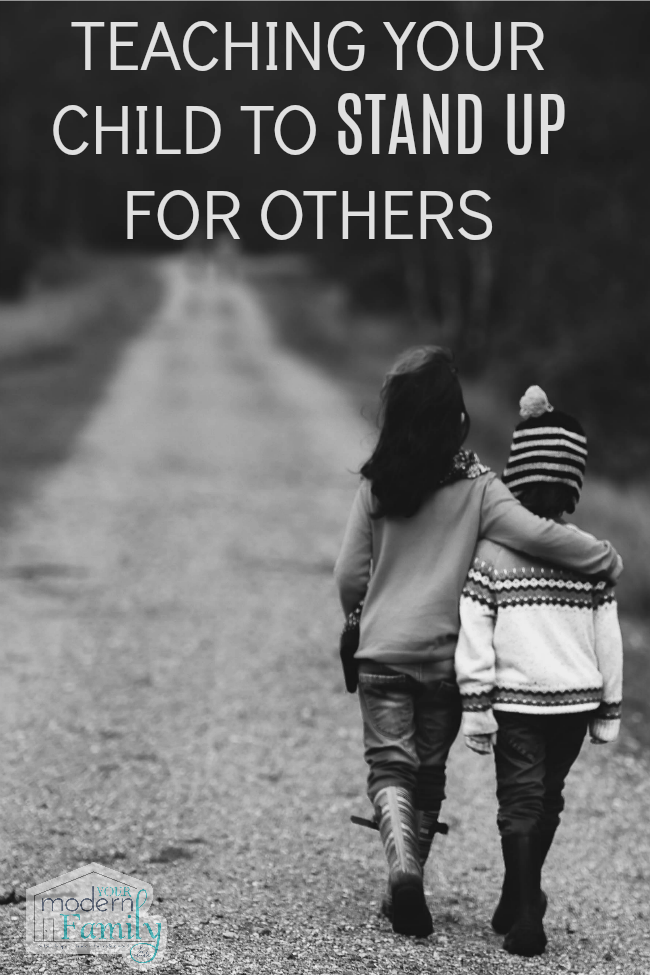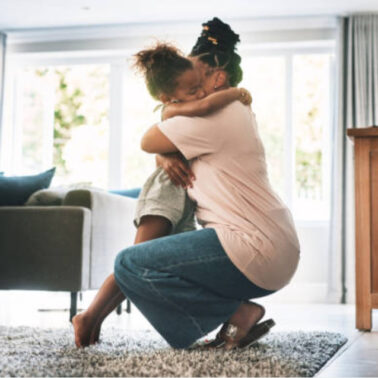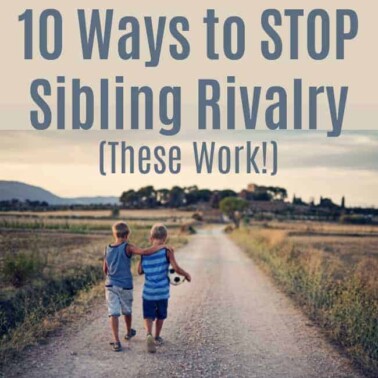This post may contain affiliate links. Please read our disclosure policy.
This post was sponsored by Google in partnership with Forward Influence.
Teaching kids to stand up for others
Did you know that it typically takes five good interactions to make up for a single bad one? That means that for every negative thing that happens to us or is said to us, it takes five positive ones to outweigh it. As parents, we can understand this and we can be aware. We know that we need to be careful with our words because our words become their inner voice. Our children need to see us modeling this type of positive behavior, as well, so they can pass it onto others.
Unfortunately, our children have to deal with bullies, just as we had to when we were their age. Whether or not you or your child are or were bullied, you know that it exists and we can all do something about it. Today I am working with Be Internet Awesome to share tips to turn those negative interactions into positive ones by being an UPstander in society.
I have never been one to stand by while someone is bullied and I hope to raise our kids to feel the same way. I do not want them to be a bystander who watches someone being put down or bullied, either online or in real life. I want them to be an upstander.
I want our kids to be an upstander by deciding not to support mean behavior and standing up for kindness and positivity. By stopping the bullying, it stops the bullying and the negativity that goes with it from spreading and harming someone.
STATISTICS about bullying:
- 28% of students have experienced bullying personally.
- 71% of students have witnessed bullying directly.
- Only 20% – 30% of students notify adults about bullying.
- Over 50% of parents are concerned about their child being bullied.
How do we stop it?

How to Teach Our Kids to Stand Up for Others:
1. Teach our children what to do:
Let them know that if they see someone being bullied, either online or in real life, they can intervene (if it is safe) or they can report it to a parent, teacher, or school counselor. Most of the time, a bully will only pick on someone if an adult is not near, so be sure to report it. Also, be sure to teach your children how to block the person doing the bullying, if they are the ones being bullied.
2. Teach your kids the difference between Tattling and Reporting.
Our kids are so afraid of being labeled a “tattletale” that they don’t want to say anything. Make sure that your child knows the difference.
Tattling is when you want to get someone INTO trouble when they aren’t hurting themselves or anyone else.
Reporting is when you’re trying to help get or keep someone OUT of trouble to prevent them from getting hurt or hurt someone else.
3. Teach them what NOT to do.
It is never OK to spread rumors or to share a hurtful social media post or comment.
4. Pile-On Kindness.
Talk to your children about how we help the child or person under attack by being kind to them. We can give compliments, say nice words or offer to help that person. Kindness goes a long way.
5. Practice in the Classroom
Tell your kids’ teachers about the online teacher curriculum at Be Internet Awesome so they can introduce these types of activities in the classroom. Be Internet Awesome is Google’s free multifaceted program designed to teach kids the fundamentals of digital citizenship and safety so they can explore the online world with confidence.
It is based on five Internet awesomeness characteristics:
- SMART: Where we learn to share with care
- ALERT: Where we learn not to fall for fake
- STRONG: Where we learn how to secure Our digital stuff
- KIND: Where we learn that itʼs cool to be kind
- BRAVE: Where we learn that when in doubt, we talk it out
6. Have Empathy
Our kids need to learn empathy for others. By letting someone know that we care, sometimes that is the most important thing that we can do. Be a friend when they see someone in need of a friend.
7. Act it out at Home.
We often do role-playing at home to teach our kids how to handle a situation. One person is the bully, another person is the person being picked on and a third person can be the Upstander.
8. Read Books about Being
There are a lot of good books, like The Juice Box Bully and Just Kidding, that teach kids how to stand up for themselves & others. Go to your local library and ask the librarian to help you find a few.
9. Listen to your kids at home
Let your kids know that they have opinions and those opinions matter. Holding family discussions where your child has a say in the matter is important to let them know that they have a voice that deserves to be heard (in a respectful way, of course.)
10. Play Interland at Home
Play Interland with your kids and put your kindness skills to the test at KindKingdom.
Interland, a part of Be Internet Awesome, is an adventure-packed online game about digital safety and citizenship.
Other Activities in the Be Kind Curriculum encourage kids to:
✓ Identify situations of harassment or bullying online.
✓ Evaluate what it means to be a bystander or upstander online.
✓ See that being an upstander is a choice.
✓ Learn there are different ways to intervene and be an upstander in a specific situation.
✓ Choose how to respond in a way that feels safe and appropriate to you.
✓ Learn specific ways to respond to bullying when you see it.
✓ Know how to behave if you experience harassment.
✓ Express feelings and opinions in positive, effective ways.
✓ Respond to negativity in constructive and civil ways.
✓ Make good decisions when choosing how and what to communicate – and whether to communicate at all.
✓ Identify situations when it’s better to wait to communicate face-to-face with a peer than to text them right away.
✓ Reflect on the online behavior of adults.
✓ Consider how the way adults act can model behavior for younger generations.
It is important that our children have the confidence to stand up for themselves & others when we are not around. It is an important lesson & skill that our children will need in life. Use every chance that you get to teach them to be kind and stand up for what they believe in.
Find more information on facebook, instagram.com, Twitter, or on their website.















